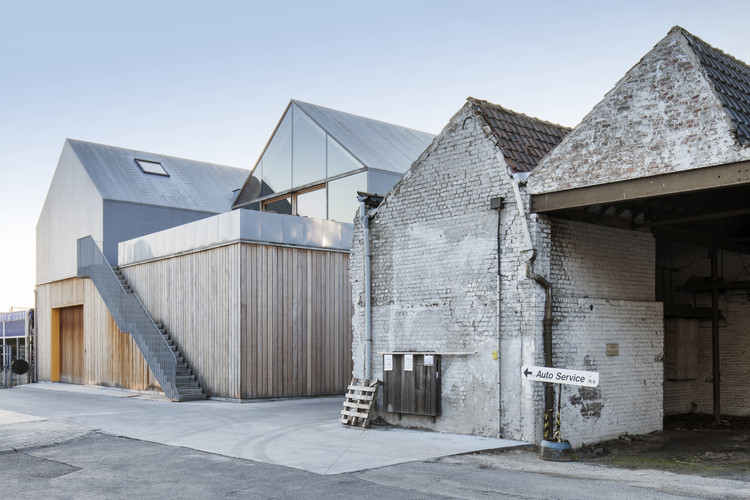
-
Architects: Delmulle Delmulle Architecten
- Area: 1350 m²
- Year: 2015
-
Photographs:Piet Albert Goethals
-
Manufacturers: AutoDesk, Chaos Group, Adobe, Trimble Navigation
-
Lead Architects: Seger Delmulle, Mathieu De Cock

Text description provided by the architects. The factory roof housing project is located in Oudenaarde, a provincial town in Belgium, where -according to the planning regulations- only industrial buildings can be built. Because of its central location and the residential character of the area, we presented a different vision to the city: we will utilize the roof, an otherwise unused surface as a second surface for constructing low-energy roof houses. Treating a factory roof, which is otherwise unused (water impermeable) surface, as a building lot for housing can provide a small answer to the ever-increasing population pressure.



This sort of urbanization is not disturbing and conceptual wise these occupations can go well together. The two entities may even be complementarily used: as an office or home for the workshop user. We use the industrial building itself in a flexible way by constructing a simple rectangular volume which can be divided into smaller segments to provide an affordable workshop for small arts and crafts companies (tailor, ceramic, glass workshop, furniture maker). A possible interaction and cooperation between these crafts can be the starting point for a better, locally made, sustainable trade model for this small provincial town.

The roof houses are built in a simple but contemporary way. Basic, affordable and low-energy timber-framed buildings with a spacious outside area. This outdoor space, which is actually an extension of the interior space, offers a very spatial and unique character. The timber (FSC labeled) framed houses, filled with cellulose insulation, is completely (and simply) covered with synthetic roofing rubber, which makes them extremely airtight, essential for low energy consumption. High insulation glass and a heat recovery ventilation system makes these, zero footprints, houses truly sustainable.



The project is used as an example of project spatial efficiency by the Flemish department of environment and was visited by the former Minister of Environment Joke Schauvliege. On the website www.ruimtelijkrendement.be, the Flemish government wants to offer users inspiring example projects in the search for more spatial return. Researching and developing genuine possibilities and creating new perspectives in day to day (built) projects is how we like to see sustainability. Perhaps it is not a utopia: recuperating the gigantic amount of factory roofs as a second level for housing, farming or trading could maybe offer a fresh perspective on how to use our already crammed up landscape.






















